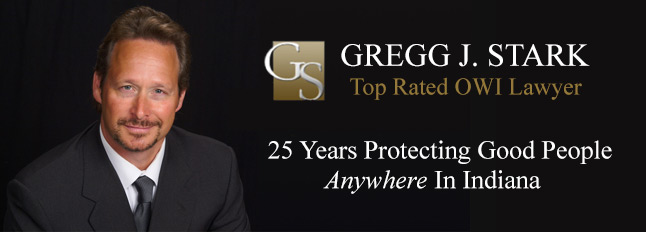In my experience as a defense lawyer, I believe that not all evidence is the same when either a judge or jury is asked to render a criminal judgement against a fellow citizen.
Most people not trained in law have become accustomed to what they have watched on television in regard to the strong evidence customarily seen to convict one within a court of law. After all, when watching a crime drama on television, no viewer wants to have any question in their mind as to the guilt or innocence of one they may be rooting for.
As a result, what is known as “direct evidence,” is more often than not the type of evidence that the American public has been conditioned to believe is required to criminally convict one who has been put under arrest within a criminal case.
For example, direct evidence is the type of evidence that will produce the witness testimony of one person against another in directly witnessing the commission of a crime and/or the witnesses’ own commission of a crime in association with a particular Defendant on trial.
Direct evidence requires no speculation or inferences as to what is being testified to and is therefore among the most powerful of evidence that a prosecutor can put forth within a criminal prosecution.
I say that direct evidence is among the most powerful evidence due to the emergence of, “scientific evidence” that has also become part of the public’s consciousness. As many people have been shown to have been wrongfully convicted based upon the direct testimony of others through the introduction of such evidence, scientific evidence is often initially expected among jurors seated to hear a criminal case.
In fact, within crime investigation shows such as, “CSI,” television viewers and prospective jurors have often grown accustomed to airtight scientific evidence as the norm in the depictions of criminal prosecutions that will enable the good guys to put the evil behind bars with little debate as to the Defendant’s guilt or innocence.
However, what may come as a source of concern to many American citizens is the reality that, “circumstantial evidence” is often a less clear cut standard of proposed proof by which prosecutors nationwide each day attempt to secure criminal convictions.
Circumstantial evidence is evidence that requires either a judge or juror to draw inferences from the testimony given by a courtroom witness. The evidence does not directly link to the guilt or innocence of a person on trial. However, a prosecutor will assert that either circumstantial evidence pieced together by one or several witnesses is legally sufficient for a reasonable person to determine an adverse inference against one on trial.
As a result, the credibility of a witness asked by a prosecutor to provide circumstantial evidence is a critical component as to whether a prosecutor will be in position to obtain a guilty verdict beyond a reasonable doubt.
Understandably, an allowance for circumstantial evidence exists due to the reality that without such evidence, many criminal cases would not be able to be prosecuted. If our criminal justice system were to require direct testimony only for all criminal prosecutions, many wrongdoers would go unpunished as not all crimes are committed in front of witness (s) able or willing to testify within a criminal case proceeding.
When focused upon my specific sphere of dui defense in Indiana, I am particularly wary of circumstantial evidence introduced within drunk driving prosecutions. This is so because unlike other types of criminal offenses targeted for criminal prosecution, both direct and scientific evidence should be the pre eminent basis by which society insures that citizens accused of drunk driving are given the most fair trial possible.
In the majority of dui prosecutions the direct evidence component utilized by a prosecutor is fairly commonplace. A policeman in most such cases is able to testify directly as to his or her observation of impaired driving activity as well as any subsequent field sobriety testing conducted as a precursor to certified breath or blood testing of a drunk driving suspect.
What I will label the scientific evidence component will be evident in most such cases by the testified breath test and/or blood draw results to substantiate the observations of impairment by a given law enforcement witness.
Yet, what of circumstances where a law enforcement official has not directly witnessed the driving of a given criminal defendant accused of drunk driving? In such cases, potentially attacking circumstantial evidence that will inevitably be used to tie driving activity with a Defendant must be vigorously examined.
I had the good fortune of obtaining a trial dismissal within one such circumstantial evidence case I had recently defended.
My client was in a vehicle with her boyfriend that was involved in an accident. Soon thereafter, officers arrived on the scene. At no time did any officer witness any individual behind the wheel of the vehicle.
My client chose to make an admission to the officers that she was driving the vehicle involved in the crash. Field sobriety testing and breath testing provided the necessary proof that she was intoxicated. Her own admissions to driving despite no direct evidence indicated to the assigned prosecutor that he had what he believed to be a strong case.
Her boyfriend, the registered owner of the vehicle, was not suspected of impairment and was therefore not put through a preliminary dui investigation.
What this prosecutor failed to account for was the need to be highly suspect of circumstantial evidence where witness credibility on the part of the state or defense is in question.
Our defense conceded that my client was intoxicated. Nonetheless, such an admission meant little without a circumstantial case to conclude that she operated the motor vehicle involved in the accident.
The investigating police officer testified as to the significance of a pair of woman’s flip flops on the driver’s side floorboard and a driver’s seat position close enough to the dashboard to be indicative of a woman driver. As her boyfriend was a large man, the officer contended that he would not have been able to drive the vehicle in the position the seat was situated.
This my friends is an on point example of circumstantial evidence in action. No direct witness to driving activity. However, an admission by the Defendant in combination with testimony of woman’s flip flops in driver seat floorboard should be enough to convict right? Wrong.
The credibility of the officer and logical case inferences within a circumstantial case prosecution mean everything. Just as one can piece together reasonable conclusions for the prosecution, the same can be said for the defense.
Without going into too much detail, the crux of our defense was the illogical contention that the sober owner of a vehicle would allow his inebriated girlfriend to drive his car in that condition, irrespective of her admissions. As her admission came during a state of intoxication, its credibility can further be called into question.
Most importantly within the trial, much significance was made of my cross examination of the officer. By having him define the meaning of a circumstantial case, I had him affirm the heightened importance of documenting any and all contentions in support of driving activity where no direct evidence of the driver in question could be established.
Although the officer carried a cell phone with him, no evidence was introduced to confirm his testimony in regard to a pair of woman’s flip flops on the drivers seat floor board, nor seat position.
I asserted that especially within a circumstantial case, this officer’s testimony could have and should have been supplemented with photographic evidence of the alleged flip flops and seat position with the taking of a cell phone picture. However, this testifying officer chose not to do so.
Further cross examination established that the officer, arriving on scene and doing a criminal records check of the occupants of the vehicle, learned that my client had a brief criminal history of driving violations, where the boyfriend did not.
I contended that this reality is what caused the officers on scene to discount further inquiry as to whether the sober owner of the vehicle actually drove the vehicle.
At no time was significant attention given to questioning the vehicle’s registered sober owner of my client’s admissions, nor what would have compelled him to let his inebriated girlfriend drive his vehicle where he was not impaired.
I submit no such questioning was initiated, because those officers on the scene did not want inconvenient answers to get in the way of my client’s criminal prosecution.
To his credit, the officer admitted within my cross examination that he did in fact focus on the arrest of my client upon learning of the occupants respective driving histories.
As a result, I contended that a flawed criminal investigation ensued where both officers and prosecutors alike believed they had an open and shut criminal conviction.
At the conclusion of cross examination the case was dismissed against my client as a matter of law. The officer subject to cross examination learned a valuable lesson in regard to the need to bolster a circumstantial prosecution with the best evidence and theory of guilt possible.
The officer honorably in open court admitted that I taught him the value of doing a better job both in preparing and presenting trial evidence within a circumstantial case.
However, in a world where law enforcement witnesses are not always so honorable, it is crucial that defense attorneys do all possible to not allow sloppy circumstantial criminal allegations to erode the fundamental underpinnings behind the term, “guilt beyond a reasonable doubt.”







